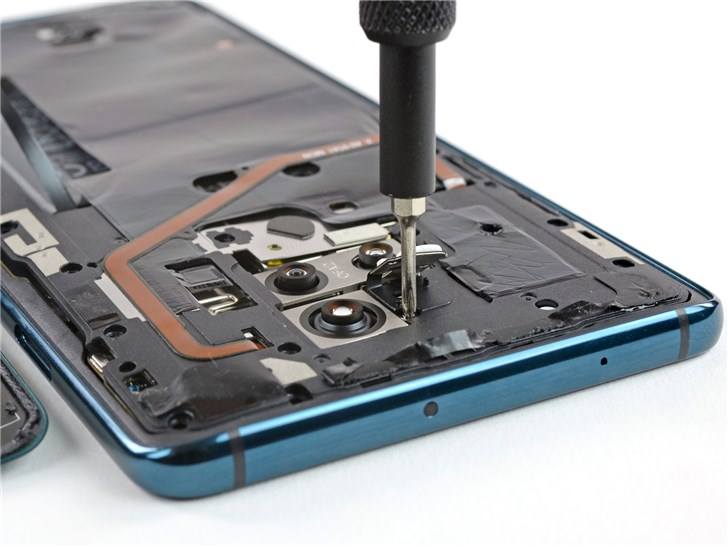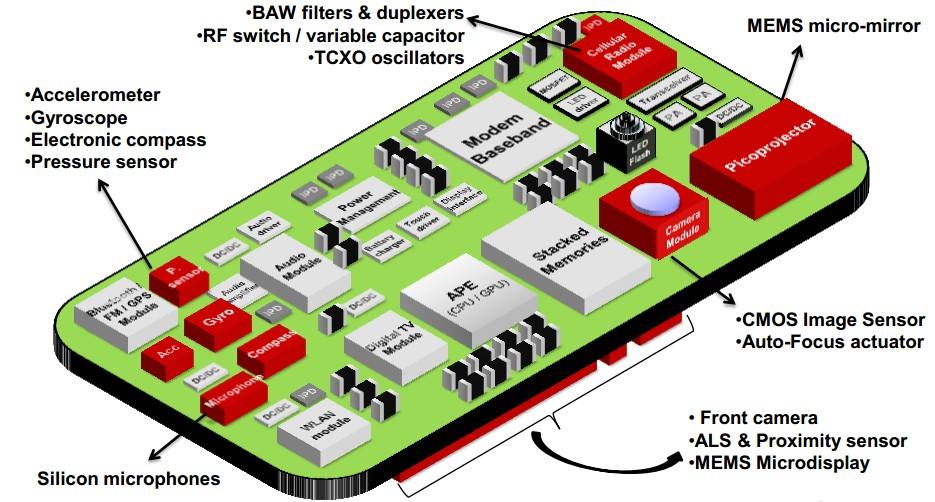Light sensor
The light sensor can adjust the brightness of the screen according to the environment in which the mobile phone is located at the time, and some can also freely control the light and dark state of the button breathing light. For example, in a particularly bright outdoor, the screen will automatically adjust to the brightest state, and in the dark environment, the screen brightness will be reduced accordingly.
Distance sensor
The distance sensor is typically used in conjunction with a light sensor. When you put your phone in the handset position, the distance sensor measures the distance between the phone and your ear. This different measurement triggers the corresponding function, such as extinguishing the screen or automatically locking the screen, and can also be used with various protective sleeves.
Gravity sensor
Nowadays, mobile phone screens are getting bigger and bigger, and the horizontal screen function that was once considered unnecessary is already popular. When we are watching photos and videos, we usually turn the phone over. In some games, gravity sensors can also be used to achieve richer interactive controls, such as balance balls, racing games, and more.
Acceleration sensor
The concept of an accelerometer is slightly overlapping with the gravity sensor, but in fact it is different. The acceleration sensor is measured in multiple dimensions and mainly measures some instantaneous acceleration or deceleration. For example, measuring the speed of the mobile phone in the game can trigger special commands through the acceleration sensor. This sensor is also used in some of the daily applications of cutting songs, flipping mute, and so on.
Fingerprint sensor
Since 2013, fingerprint sensors have exploded in smartphones. It can automatically collect users’ fingerprints for privacy protection purposes. However, mobile phones with fingerprint sensors are not only unlocking devices, but also interacting with mobile payments, including Apple Pay and Sumsang Pay, all based on fingerprint sensors.
Gyro sensor
Remember the killer app when the iPhone 4 was just launched? Yes, it is a gyroscope. Usually equipped with a three-axis gyroscope in the phone, it can track the displacement changes in six directions. This kind of gyroscope is needed for some shooting or racing games that we play every day. Many applications also work with gyro sensors, such as 3D camera, panoramic navigation and so on.
Magnetic field sensor
The magnetic field sensor uses magnetoresistance to measure the plane magnetic field, thereby detecting the strength of the magnetic field and the position of the direction. Generally used in common compass or map navigation to help mobile phone users achieve accurate positioning. If you are part of the southeast and southwest, you can easily locate it with the electronic compass in the map.
GPS position sensor
The main function of the GPS module is to receive satellite coordinate information through the antenna to help the user locate. With the popularity of 4G networks, GPS is being used in more scenarios, such as remote positioning monitoring with intelligent hardware, or positioning after device loss. The mobile phone is generally equipped with A-GPS. The so-called A-GPS is a faster positioning through the mobile network based on receiving the navigation satellite signal, which is more advanced than the ordinary GPS.
Air pressure sensor
The air pressure sensor has been used in military mobile phones before, and is divided into a variable displacement air pressure sensor and a variable resistance air pressure sensor. A change in air pressure causes a change in the resistance or capacitance measurement. General GPS can calculate your position, but for some height changes you need a barometric pressure sensor to measure. A mobile phone with this sensor can measure how many floors you have on a day, or for indoor positioning, and the internal air pressure sensor is mainly the degree of test equipment closure.
Temperature Sensor
The temperature sensor is used to detect the temperature change of the mobile phone itself, and the degree of heat generation of the mobile phone can be seen. In terms of extended functions, the temperature sensor can also detect temperature changes in the outside air, even the user's current body temperature. (Learn more about Temperature Sensor)
Hall effect sensor
Similar to a magnetic field sensor, a Hall effect sensor converts a changing magnetic field into an output voltage, creating a potential difference across the conductor. Some mobile phones will be equipped with some protective covers at random. When the protective cover is closed, the mobile phone will automatically lock the screen. After the protective cover is opened, the device will automatically unlock. (learn more about Hall Effect Sensor)
Ultraviolet sensor
The ultraviolet sensor uses the photoelectric emission effect to measure, and the outdoor light source is taken by the camera to convert the ultraviolet light intensity into a discharge effect. Mobile phones using such sensors are rare, and the stability of the measurements is subject to further observation.
Heart rate sensor
The heart rate sensor is more common in the wearable device, but the application on the mobile phone is generally set at the back of the mobile phone. The high-intensity LED light source illuminates the finger to convert the corresponding data to the heart rate, and the finger needs to be kept stable during the test. Otherwise, the test results will have a large deviation.
Blood oxygen sensor
Like the heart rate sensor, the hemoglobin and oxyhemoglobin in the blood absorb different amounts of infrared light and red light. When the two LED lights of the infrared light and the red light are simultaneously irradiated with the finger, the absorption of the reflected light can also be measured. The spectrum is thus measured for blood oxygen content.



